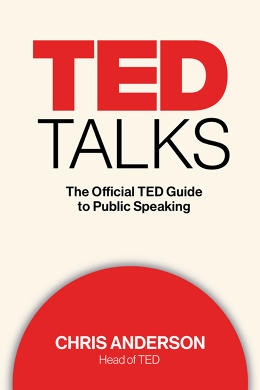TED Talk Masters Teach You How To Tell A Story That Actually Means Something
“It happens way too often: You’re sitting there in the audience, listening to someone talk, and you know that there is a better and great talk in that person, it’s just not the talk he’s giving.” That’s TED’s Bruno Giussani, a man who cannot stand seeing potentially great speakers blow their opportunity.
The point of a talk is to say something meaningful. But it’s amazing how many talks never quite do that. There are lots of spoken sentences, to be sure. But somehow they leave the audience with nothing they can hold on to. Beautiful slides and a charismatic stage presence are all very well, but if there’s no real takeaway, all the speaker has done—at best—is to entertain.
What’s Your “Through-Line”?
The number-one reason for this tragedy is that the speaker never had a proper plan for the talk as a whole. The talk may have been planned bullet point by bullet point, or even sentence by sentence, but no time was actually spent on its overall arc.
There’s a helpful word used to analyze plays, movies, and novels; it applies to talks, too. It’s “through-line,” the connecting theme that ties together each narrative element. Every talk should have one.
Since your goal is to construct something wondrous inside your listeners’ minds, you can think of the through-line as a strong cord or rope onto which you will attach all the elements that are part of the idea you’re building.
This doesn’t mean every talk can only cover one topic, tell a single story, or just proceed in one direction without diversions. Not at all. It just means that all the pieces need to connect.
Here’s the start of a talk thrown together without a through-line:
I want to share with you some experiences I had during my recent trip to Cape Town, and then make a few observations about life on the road . . .
Compare that with:
On my recent trip to Cape Town, I learned something new about strangers—when you can trust them, and when you definitely can’t. Let me share with you two very different experiences I had . . .
The first setup might work for your family. But the second, with its through-line visible from the get-go, is far more enticing to a general audience.
How To Craft A Powerful Through-Line
A good exercise is to try to encapsulate your through-line in no more than 15 words. And those 15 words need to provide robust content. It’s not enough to think of your goal as, “I want to inspire the audience” or “I want to win support for my work.” It has to be more focused than that. What is the precise idea you want to build inside your listeners? What is their takeaway?

It’s also important not to have a through-line that’s too predictable or banal, such as “the importance of hard work” or “the four main projects I’ve been working on.” Zzzzz . . . You can do better! Here are the through-lines of some popular TED Talks. Notice that there’s an unexpectedness incorporated into each of them.
- More choice actually makes us less happy.
- Vulnerability is something to be treasured, not avoided.
- Education’s potential is transformed if you focus on the amazing (and hilarious) creativity of kids.
- With body language, you can fake it till you become it.
- A history of the universe in 18 minutes shows a path from chaos to order.
- Terrible city flags can reveal surprising design secrets.
- A ski trek to the South Pole threatened my life and overturned my sense of purpose.
- Let’s bring on a quiet revolution—a world redesigned for introverts.
- The combination of three simple technologies creates a mind-blowing sixth sense.
- Online videos can humanize the classroom and revolutionize education.
Barry Schwartz, whose talk is the first one in the list above, on the paradox of choice, is a big believer in the importance of a through-line:
Many speakers have fallen in love with their ideas and find it hard to imagine what is complicated about them to people who are not already immersed. The key is to present just one idea—as thoroughly and completely as you can in the limited time period. What is it that you want your audience to have an unambiguous understanding of after you’re done?
The last through-line in the list above is from education reformer Salman Khan. He told me:
There were a lot of really interesting things that Khan Academy had done, but that felt too self-serving. I wanted to share ideas that are bigger, ideas like mastery-based learning and humanizing class time by removing lectures. My advice to speakers would be to look for a single big idea that is larger than you or your organization, but at the same time to leverage your experience to show that it isn’t just empty speculation.
Your through-line doesn’t have to be as ambitious as those above. But it still should have some kind of intriguing angle. Instead of giving a talk about the importance of hard work, how about speaking on why hard work sometimes fails to achieve true success, and what you can do about that?
Instead of planning to speak about the four main projects you’ve recently been working on, how about structuring it around just three of the projects that happen to have a surprising connection? In fact, Robin Murphy had exactly that as her through-line when she came to speak at TEDWomen. Here’s the opening of her talk:
Robots are quickly becoming first responders at disaster sites, working alongside humans to aid recovery. The involvement of these sophisticated machines has the potential to transform disaster relief, saving lives and money. I’d like to share with you today three new robots I’ve worked on that demonstrate this.
Not every talk has to state its through-line explicitly up front like this. There are many other ways to intrigue people and invite them to join you on your journey. But when the audience knows where you’re headed, it’s much easier for them to follow.
Think of your talk as a journey that the speaker and the audience take together, with the speaker as the guide. But if you, the speaker, want the audience to come with you, you probably need to give them a hint of where you’re going. And then you need to be sure that each step of the journey helps get you there.
In this journey metaphor, the through-line traces the path that the journey takes. It ensures that there are no impossible leaps, and that by the end of the talk, the speaker and audience have arrived together at a satisfying destination.
Many people approach a talk thinking they’ll just outline their work or describe their organization or explore an issue. That’s not a great plan. Without a powerful through-line, a talk is likely to end up unfocused and without much impact.
This article is adapted from TED Talks: The Official TED Guide to Public Speaking © 2016 by Chris Anderson. Reproduced by permission of Houghton Mifflin Harcourt. All rights reserved.
Fast Company , Read Full Story
(32)














